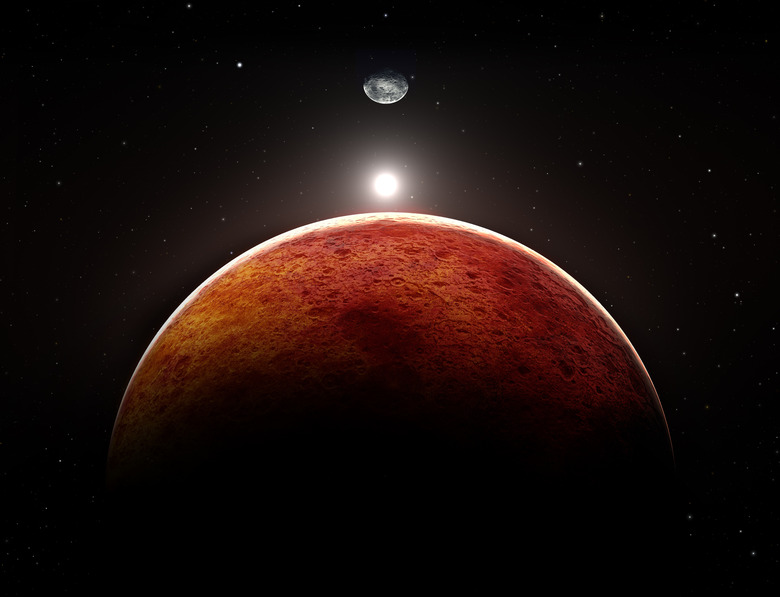Similarities & Differences In Mars & Earth
Earth and Mars are planetary neighbors in the solar system, sharing some features, such as a rocky composition, and having differences, such as size and temperature. Although the same materials make up Earth and Mars, they are present in different amounts. The two planets are also thought to have formed at about the same time, although they evolved to become very different. While Earth is home to many forms of life, whether any exists on Mars at all remains a question.
Similarities Between Mars and Earth
Similarities Between Mars and Earth
Both Earth and Mars are believed to have condensed out of a massive cloud of hot gases around the sun about 4.6 billion years ago, according to the European Space Agency. Since that time, both planets slowly cooled and formed into the spherical shapes you see today. Both planets have dense cores and hard exterior crusts. In addition, water had a role in the history of both.
Size of the Planets
Size of the Planets
Mars is nearly twice as large as the Moon and a little over half the size of Earth, according to the Center for Mars Exploration. The diameter of Mars is about 6,786 kilometers (4,217 miles), compared to that of Earth, which is about 12,756 kilometers (7,926 miles). In addition, Earth has a mass that is 10 times greater. Because of its much smaller size and mass, Mars cooled at a much faster rate than Earth, following its initial formation. Also, its lower gravity resulted in the faster loss of volatile materials, such as water and gases.
Atmosphere and Water
Atmosphere and Water
Mars has a very thin atmosphere that consists mostly of carbon dioxide. Average atmospheric pressure is 7 millibars, compared to 1,013 millibars on Earth. Without much atmosphere to protect it from heat loss, temperatures on Mars are much colder. According to NASA Quest, average temperature in the mid-latitudes are minus 50 degrees Celsius (minus 58 degrees Fahrenheit). At night, it can drop to minus 60 degrees Celsius (minus 76 degrees Fahrenheit), while daytime highs may reach 0 degrees Celsius (32 degrees Fahrenheit).
Although water may once have existed on the surface of Mars, it disappeared long ago for unknown reasons. In comparison, Earth's surface is two-thirds water.
Stable Mars, Dynamic Earth
Stable Mars, Dynamic Earth
The Earth's outer crust is always moving. It is divided into plates that move laterally. In contrast, Mars' is stable, although there still appears to be some magma flow underground. This makes its geologic state very different from Earth's. Greater stability on Mars results in the preservation of much older features, some dating back to about four billion years.
Cite This Article
MLA
Lee, Lexa W.. "Similarities & Differences In Mars & Earth" sciencing.com, https://www.sciencing.com/similarities-differences-mars-earth-8425570/. 20 April 2018.
APA
Lee, Lexa W.. (2018, April 20). Similarities & Differences In Mars & Earth. sciencing.com. Retrieved from https://www.sciencing.com/similarities-differences-mars-earth-8425570/
Chicago
Lee, Lexa W.. Similarities & Differences In Mars & Earth last modified August 30, 2022. https://www.sciencing.com/similarities-differences-mars-earth-8425570/
